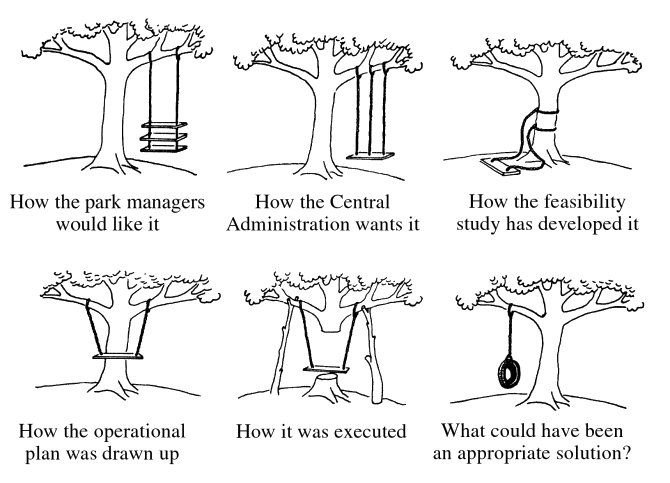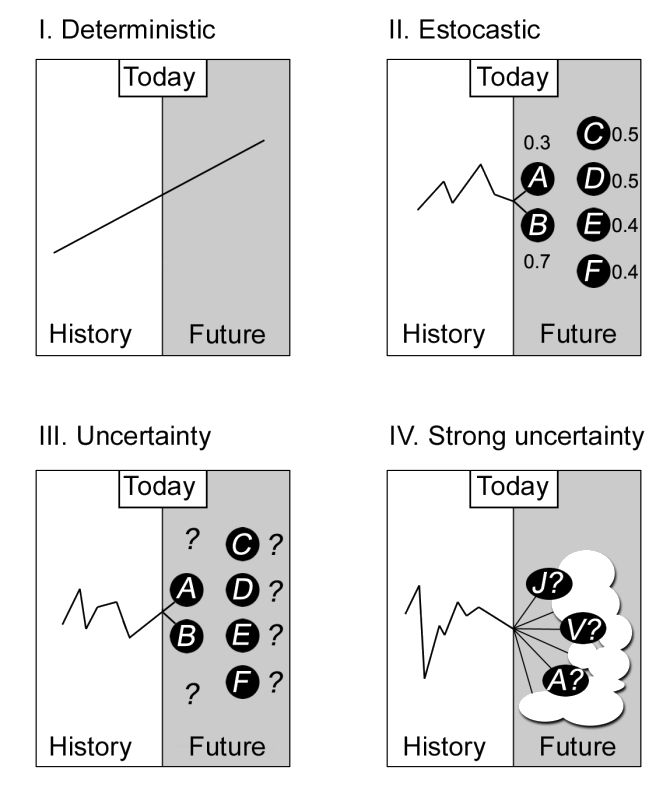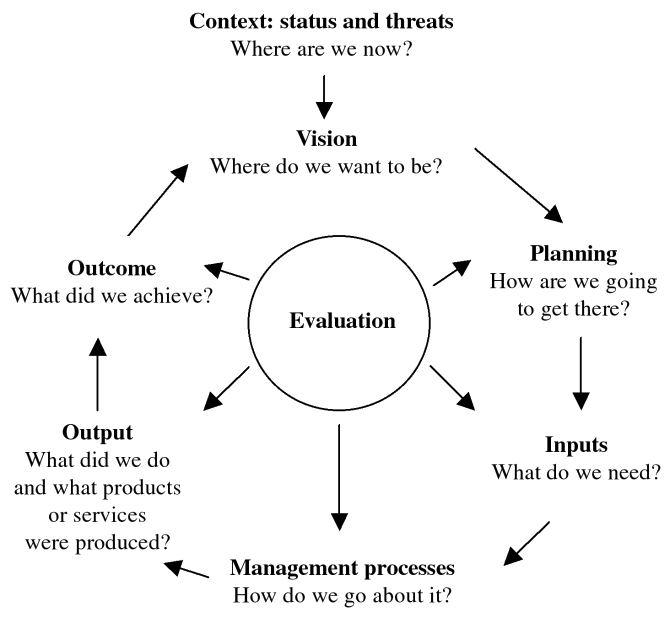


The authors and collaborators of this book would like to thank the German
Technical Cooperation (GTZ) ABS-LISTRA Sectorial Project for financing the
study, particularly its coordinator, Rolf Mack, who has accompanied the
elaboration process with enormous commitment.
Likewise we thank David Sheppard and Adrian Phillips of the IUCN's World
Commission on Protected Areas, who, with their enthusiasm and interest in
the topic, were always of great support.
The decisive coordination of the electronic forum, and the preparation of
the "Taboga" workshop, by Stefanie Eissing, have made a great
part of the initiative successful.
Ana Spalding did a great job on the revision of the Spanish text, Thora
Amend, Todd Capson, Brigitte McBain-Haas and Sarah Spalding on the English
text and Silke Berger on the book design.
The colleagues from the Cerro Hoya Project (ANAM-GTZ/Eco) in Panama, with
all their logistical support performed a wonderful job.
Through the German Cooperation's Network of Projects for Sustainable Use
of Natural Resources in Latin America, many contacts with experts have become
a reality.
We would like to thank all the colleagues who contributed in the electronic
forum, in the analysis of documents, or in other ways, with their invaluable
ideas, comments, suggestions, and advice:
Peter Asmussen, Stanley Arguedas, Luis Gerardo Artavia Zamora, James Barborak,
Mario A. Boza, Jens Brüggemann, Indra Candanedo, Adrián Carrillo,
Jürgen Czerwenka, Arthur Ebregt, José Vicente De Lucio Fernández,
Roberto Dilger, Julie Duff, Charlotte Elton, Rafael García, Juan
Carlos Godoy, Mario Gabaldón,
Juan Gómez, Cecilia Guerra, Kirsten Hegener, Daniel Holness, Pierre
Ibisch, Sigfried Kastl, Roberto Ulloa, Kenton Miller, Olaf Ostermann, Gonzalo
Diego Peña Bello, Juan Carlos Riascos de la Peña, Emel Rodríguez,
Ricardo Rodríguez, Pedro Rosabal, Peter Saile, César Sandino,
Michael Schlönvoigt, and Kyran D. Thelen.To all of those who in one
way or another participated in this work, thank you very much.
The conceptualization of planning instruments for the management of protected
areas in Latin America has a relatively long history. In 1974, the United
Nations Food and Agriculture Organization (FAO) published a Technical Work
Document called "National Park Planning, a guide for the preparation
of management plans for national parks," prepared by John J. Moseley,
Kyran D. Thelen, and Kenton R. Miller. The book "Planning National
Parks for Ecodevelopment in Latin America," by Kenton Miller in 1980
can be considered a landmark in the history of protected areas in this continent
due to its wide diffusion and the positive impact it has had on the protected
area movement. The IUCN, ten years later, in its publication "Managing
Protected Areas in the Tropics," retakes this management plan concept
and gives it wide circulation.
It is only in the nineties that, with growing experience in the management
of protected areas, particularly national parks, the administrations of
the conservation areas in different Latin-American countries started to
experiment with adaptations to this concept. A first recollection and exchange
of experiences was directed by the Network of Protected Areas of the Amazon
(Surapa) with sponsorship from the European Union. As a result, in 1997
the book, "Guide for preparing management plans in protected areas
of the Amazone," prepared by Mario Gabaldón, was published.
Within the framework of the First Latin-American Congress on Protected Areas,
which took place in 1997 in Santa Marta, Colombia, the National Institute
for the Environment and Renewable Natural Resources (IBAMA) of Brazil organized
a workshop about management plans and presented its "Methodological
Guide for Planning of Indirect Use Conservation Units". In 1998, in
Cochabamba, Bolivia, through an initiative of the German Technical Cooperation
Agency (GTZ) and the Bolivian Committee of the World Conservation Union
(IUCN), the International Seminar-Workshop: "Participative Methodologies
for the Elaboration and Implementation of Management Plans in Protected
Areas" took place, where the participants recommended that the new
ideas for the conceptualization of management plans should be documented
and circulated. Three years later, in 2001, through an initiative of Stephan
Amend from Cerro Hoya Project (ANAM-GTZ/Eco) and Thora Amend from the Sectorial
project: "Management of Protected Areas and Buffer Zone Development"
(ABS-LISTRA) from GTZ, the proposal was re-examined, and an international
workshop was held on Taboga Island, Panama. The objective of the workshop
was:
"To strengthen the technical exchange between experts and prepare recommendations
for the conceptualization and implementation of management plans for protected
areas in Latin America."1
The steps that were taken before this workshop were the compilation of literature,
the preparation of key questions2, the analysis of literature3 based on
these key questions and the documentation of the inputs and comments from
the participants of an electronic forum. The electronic forum comprised
more than 90 experts from 20 countries (15 Latin-American countries, 4 from
Europe, and the USA) with experience in international institutions, ministries,
protected area administrations, NGOs, universities, projects, and consulting
firms.
This document, a summary compilation from an extensive base of Latin American
works on the reality of protected area management, was first published in
Spanish in 2002 under the title Planes de Manejo: Conceptos y Propuestas.
The ABS-LISTRA project from GTZ made the decision to support the translation
and publication of the English version after communicating with experts
outside the region showed a strong interest in the topic. In addition, it
will be easier to share Latin American experiences with other interested
parties at the Fifth World Congress for Protected Areas, in Durban/South
Africa, planned for September 2003.
In the year 2001, during the analysis phase of all the different "management
plan" documents for the Taboga Workshop, Kenton Miller wrote:
"I enjoyed reading the analysis of the IUCN Manual on Protected Areas in the Tropics, and then one of my own book from 1980. It is obvious to all that even though a lot of the contents of my book, based upon fieldwork through 1978, remain valid and useful, there have also been quite some changes. While the book foreshadows the development of the IUCN category system, which has its origins in my work in Cuba and Costa Rica, there was then no dimension of tenure options. Nowadays we would surely expand on the aspects of alternative ownership, jurisdiction, community-based option, co-management approaches, etc. Back then, to speak of multi-agency planning teams was already somewhat "revolutionary" since most teams came entirely out of central government agency offices. And, at that time, the major threat to nature conservation was the totally unorganized expansion of the agricultural frontier by the landless being driven off good soils and by corporate plantation agriculture, forest harvesting, etc. Nowadays, we would also have major chapters on the social dimensions, on ecosystem services, on new economic tools, sustainable finance, and on landscape scale/bioregional planning models. My point is to place each work in its historical context when we discuss them at the workshop; and to pick and choose those components that remain useful for future use. We also need a way to focus clearly on goals and objectives. You'll recall my chapter that discusses "Management by Objectives." Most of those remain relevant. But both the context and the concept of "stakeholders" have expanded. How far out do we reach? Just to the immediate neighbors or all the way to urban centers?"
The aperture of protected areas towards the community stems from here. The ecological objective transcends the limits of the protected area and becomes necessary for the community and, at the same time, it becomes evident that the community's needs should also be considered as objectives for the established area. Due to this simple statement, we must infer that planning for protected areas must be formulated on the basis of the ruling policies of the respective country, such as, for instance, economic growth, employment increase, the improvement of the quality of life (improving health, education, and housing conditions mainly), environmental sustainability, and human development, aside from considering the corresponding ecological concerns, which are a tradition in protected area planning. In other words, we must insert the protected areas into the context of local, provincial, and national development. This is the fundamental aspect that must be incorporated, regardless of the planning methodology.
More than 25,000 protected areas have been established up until the end of the millennium, covering almost 10% of the surface of the Earth. Central America has increased its protected areas, covering more than 22% of its territory. The protected areas play a vital role in the countries' development and land use planning, and accomplish many of the objectives described by Kenton Miller in 1980:
- maintaining representative samples of each major biological region in its natural unaltered state,
- maintaining the ecological diversity and the regulation of the environment,
- maintaining the genetic resources,
- maintaining cultural heritage objects, structures, and sites,
- protecting scenic beauty,
- facilitating education, research, and monitoring of the environment in natural areas,
- facilitating public recreation and tourism,
- supporting rural development and rational use of marginal lands,
- maintaining watersheds,
- controlling erosion and sedimentation, and protecting downstream investments.
By fulfilling the requirements for sustainable development by integrating the environmental and socio-economic dimensions in a balanced fashion, protected areas are indispensable as tools to promote nature conservation and make it a reality. We must urgently find answers to the question of how to achieve the conservation objectives due to the increasing pressure that weighs upon protected areas.
For 30 years management plans have been seen as valuable instruments for the management of protected areas. However, many times they do not respond to the reality and the specific needs, and the people who should use them do not see them as instruments to achieve an effective and efficient management of these areas.
Fig.#1Planning

Based on personal experience and on an analysis of existing literature, a group of experts, which works in Bolivia on the conceptualization of management plans, identified the following weak spots in various aspects of the traditional concept of planning4 :
In the conceptual aspects of management
- scarce realism in the formulation of objectives and programs,
- concentration on the descriptive and operative aspects, with the subsequent lack in the strategic realm and in the contextualization of national policies and development processes,
- scarce or no spatial integration with land use plans at the regional and local level,
- the spatial reach of the planning is limited to the protected area itself,
- little consideration for the social, economic and cultural relations of protected areas with their surroundings,
- the emphasis of the management is directed towards the biological, ecological, physical, and cultural aspects, whereas the analysis of the productive and organizational systems that exist in many protected areas is often missing.
In the planning conception
- planning is seen as a process that is limited in time and not as a continuous process,
- the management plan is a static document, fixed in its approach and temporal planning, so it tends to become obsolete rapidly,
- the extent of local participation is often marginal or is limited to consultation regarding a final document, which is why it often lacks legitimacy and social sustainability,
- there is no consistency between the diagnoses and the management approach or the proposed activities,
- the planning depends on a group of experts, often external to the protected area, and it cannot be assumed by the local actors.
In the operative aspects
- the preparation of the plans is expensive and generally requires a lot of time, which poses a problem regarding the financial sustainability. As a result, in many cases it has not been possible to produce management plans. Only annual operational plans were prepared that lack the long term strategic orientations.
Taking into account the reality of protected areas in Latin America, the current document tries to gather and analyze different aspects of management plans, with the expectation of offering new impulses for their elaboration."
The first part of this document introduces a series of concepts used in the management of protected areas, including a description of their current situation. The second part consists of a proposal for the establishment of more effective and efficient planning and execution for the management of protected areas. Both sections respond to the questions: where are we? where do we want to go? what can we do to get there? and which is the best way to fulfill the expectations?
"Planning means thinking before acting, thinking methodically, in a systematic manner; explaining possibilities and analyzing their advantages and disadvantages; setting goals, projecting towards the future, because what may or may not happen tomorrow will decide whether my actions of today are effective or not. Planning is the tool for thinking about and creating the future".5
One of the main characteristics of human beings is that we can act in a planned fashion and not only by instinct. Planning is very normal and we integrate it into practically every aspect of our daily lives.
Carlos Matus, the well-known promoter of Situational Strategic Planning (SSP) explains that there is not only one way of understanding planning, but that it depends on the characteristics of the reality to which it is to be applied. The four models that follow show very simple situations or cases, such as model I, or very complex ones, such as model IV. They are every day cases, in the sense that they represent aspects of real life. Models I and II are relatively common in the natural sciences. Whereas model IV represents the complexity of the social system.
Model 1: Deterministic Systems
These systems have only one past, one future, and follow laws that, once they are known, allow for the pure, certain, and safe prediction of the future. The most traditional natural sciences laws follow this model. Thus, when two atoms of hydrogen are combined with one of oxygen, it is possible to predict exactly that the result will be water. In this case there are no uncertainties or surprises, and the action of planning implies manipulating objects or materials that follow a common purpose. For example, the ground plan for the construction of a house follows this model, in the same way that "traditional planning" does, as we shall see in the following chapters.
Model II: Estocastic Systems
These are systems whose future development follows very
precise probability laws, where the future possibilities are completely
numerable. Additionally it is possible to objectively predict the probability
that something will happen. For example, we know that the probability that
a car that has traveled 150,000 km will show damage in its motor or other
essential parts is very high.
Model III: Quantitative Uncertainty Systems
These are systems where it is possible to numerate all the possibilities, but it is not possible to assign an objective probability to any one of them. We know all the future possibilities, but we do not have any basis on which to assign a higher or lower probability rate to each one of them. For example, we can show a soccer match between Brazil and Argentina in which there are three possibilities: a) Argentina wins, b) Brazil wins, c) there is a tie. All of the possibilities are known, but we do not know the probability for each possibility.
Model IV: Strong Uncertainty Systems
This is a model that recognizes the approximate and provisional character of scientific knowledge and completely establishes the asymmetry between the past and the future. The past is closed, that is to say, all that is possible has already happened, while the future is open to many possibilities, and there is no way that we can imagine them all. This is a case where a) it is only possible to recognize and conceive certain future possibilities, never all of them; b) it is not possible to assign objective probabilities. How many, and which probabilities an analyst is capable of listing depends on his or her imagination, experience, and knowledge about the case. But the list will always be incomplete and there will always be the risk of omitting the most important possibility.
Fig.#2 Planning described by four models

In our daily lives, and in the management of protected areas, there are situations that can illustrate each and every one of the models; where each one of them has its own implications in the planning process. Carlos Matus' criticism of traditional planning concentrates on the fact that
"Traditional planning ignores the existence of the other, it ignores the opponents, it ignores the metaphor of the game, and it ignores the social actors. It is a planning mechanism that has one actor and many agents; in other words, one person directs, while the rest play or participate according to the established rules. This basic assumption, which takes away the representativity of the real world, creates a complete lack of capacity to deal with uncertainty and surprises."
This criticism of the traditional planning model is mentioned in order to present elements that should not be ignored, and to demonstrate that planning can be seen in many different ways, depending on the situation in which it is applied.
Planning as a
continuous task in the
management cycle
"Managing" means giving shape to the social processes in order
to reach a common vision. One of the management functions is the creation
of shared objectives and visions. This is achieved through analysis and
planning; informing, organizing, motivating, establishing cooperation networks,
monitoring, and reflecting. These activities, and the tasks that appear
as a result of them, must be developed regularly throughout the planning
process, from the preparation, up until the implementation of the first
steps. This implies that planning for the management of a protected area
must not be limited to the elaboration of a management plan, but that it
should be seen as a dynamic process.
As such, it is very susceptible to the changes that occur in the protected area and to the new perceptions and priorities of the different actors. Thus, planning must be considered a continuous task in the management of protected areas, and it must be implemented according to the needs. This process is not linear. It has feedback cycles, in which the analysis and the decisions that are made can be revised in greater detail, as more experience and information are acquired. Therefore, it is necessary to use the evaluation instrument, taking into account all aspects of the management cycle, including the context in which it will take place. The results of the evaluation can be fed back into the different parts of the management cycle.
Fig.#3 Management cycle and evaluation

The follow-up and evaluation of the management of protected areas can be performed at several levels: within the context in which it is being managed, with the planning, with the information and resources that are required, with the process, and with the achievement of the management goals. Once the "outputs" and "expected outcomes" to be reached at each level have been defined, together with the parties that are involved in the different management steps, it is possible to determine whether or not they have been reached.6
The scope of the expected output: What was done and what outputs or services were produced?
The questions about the evaluation of the "output" take into account what has been done through the management, and they examine to what extent the goals, plans, and work programs have been implemented. The focus of the evaluation of the expected output is not to verify whether the desired goals have been met through the actions that have been taken; but rather the idea is to examine whether the activities have been performed on time, and which were the obstacles for the implementation.
The scope of the expected outcome: What has been achieved?
This question evaluates whether the management has been successful with regards to the objectives that were identified in the strategic plan and in the zoning plan, according to the management category, and in the municipal, regional, and national development plans. The evaluation of the "outcomes" or impacts has a lot of meaning in the areas in which concrete management objectives and activities have been specified. Amongst the ways of evaluating the expected outcomes we can mention: long-term monitoring of the condition of the biological and cultural resources of the protected area, socioeconomic aspects of the application, and impacts of the area management on the local communities. The evaluation of the expected outcomes is the real proof of the management effectiveness.
In the past little attention has been paid to the evaluation or follow-up of the expected outcomes of the management of a protected area. However, this aspect is extremely important, which is why the selection of indicators to be monitored is crucial.